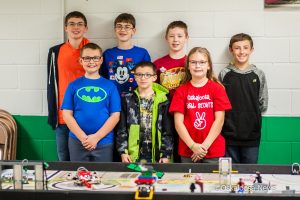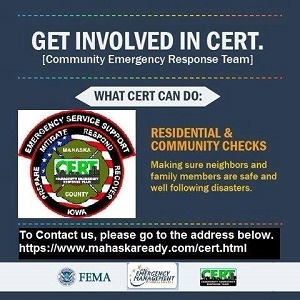Legos Aren’t Just For Fun

Young Lego League participants are learning skills like problem solving and working as a team in order to achieve goals.
Oskaloosa, Iowa – Lego League may sound like a sporting event to see who can assemble the latest Lego creation fastest.
In reality, the First Lego League is fun, but it’s also a great opportunity for young people to expand their ability to problem solve, and build social skills that will carry them on to the next level in life.
First Lego League is built around STEM, [Science, Technology, Engineering and Math], and goes beyond those to help teach how to work as a group, and to figure out how best to get along to achieve a common goal and overcome the challenge that is presented to them.
Every year in August, the season begins for First Lego League, with six teams of children, ranging from 4th grade to 7th grade.
This year, the challenge is based upon ‘Animal Allies’, which deals with human/animal interaction.
The participants have to research, and ultimately come up with a viable solution and share the project with others.
The Lego Mindstorm robot is also used in the process of solving those missions, but first the robot has to be built, and then programmed in order to solve those missions.
In tournament play, the team of participants gets two-and-a-half minutes to complete as many missions as possible.
The team then presents their project to the judges, including a robot design review presentation and then a core values presentation. The core values presentation takes place without any of the adult observers in the room.
The core values presentation helps judges determine how the team interacts, such as if one or two persons do the work, or if the team gets mad at each other. How do they function as a team is the question being answered by the judges.
Getting along with team members, critical thinking, troubleshooting, and conflict management are some of the things a team learns along the way.
Each team comes up with their own rules, and when a rule is broken, they will be breaking their own rules, and not an adult’s rule. The team then handles any discipline if a rule is broken.
When it comes to achieving this year’s goal of ‘Animal Allies’, a state animal abuse registry ended up being an example of a local team’s project.
The premise behind the registry would be that if a person is convicted of a crime that included a charge of animal cruelty, their name would be added to the animal cruelty registry, which is similar to a sex-offender registry.
Those places that deal with animals, like veterinarians, animal breeders, pet stores and animal shelters for example, would have access to that list, to help determine if you could adopt a pet.
The robot and the programming that is needed to help the robot navigate and complete tasks helps to represent real world problem solving. Each successful task earns the team points.
The team starts out with a brick, which is the processor of the robot, and the team builds out from that.
Programmers on the team instruct the robot to achieve those goals. They may instruct the robot how many times the wheels need to turn in order to arrive at its next goal, for example.
If you are interested in learning more about Lego League, you can visit the Mahaska County 4-H website here – http://www.extension.iastate.edu/mahaska/news/jr-first-lego-league-information















